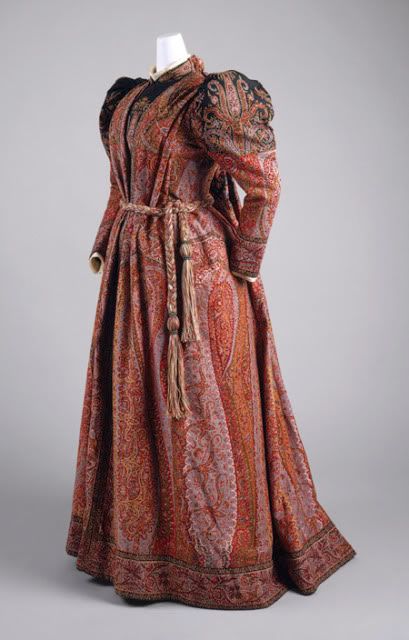The films Midnight in Paris and The Artist, along with ABC TV's series Miss Fisher's Murder Mysteries, have sparked renewed interest in 1920s style; I found the images from my previous post on anachronistic fit while researching my Phryne Fisher costume for a costume party. No doubt Baz Lurhmann's version of The Great Gatsby will fuel the fire when it comes out early next year.
But as Lizzie Bramlett reminds us at The Vintage Traveler, the 1974 Robert Redford/Mia Farrow Great Gatsby film was just part of a general wave of 1920s and 1930s nostalgia during the 1970s. Art Deco, which had languished in popularity during the Atomic Age, enjoyed a comeback around this time, and there was a renewed interest in Golden Age Hollywood.
Take paisley, for instance. I associate it with '70s hippie clothing, and men's casual shirts in the 1980s and early 1990s. This picture, which I found at 'Ivy style' menswear blog The Trad, is from 'Clothes with Style', a 1985 article by legendary New York fashion journalist Robert Bryan, in the January 1985 edition of M magazine.

"It doesn't take a Douglas Fairbanks Jr to know that … a paisley shirt and khaki trousers are indigenous to a Saturday afternoon stroll," Bryan writes. Indeed.
But as this truly amazing visual history of paisley illuminates, it first entered Western fashion from Persia, via India, in the first part of the 17th century. It was so crazy popular that a French royal decree banned its import between 1686 and 1759.
Whether imported, made in Europe or brought home from India by soldiers and colonialists as souvenirs, cashmere shawls with paisley weaves became status symbols for women by the early 19th century. The English term 'paisley' comes from the central Scottish weaving town that came to specialise in the textiles.

Empress Josephine, 1809
During the Victorian era, paisley shawls were a common outer garment for women. Old shawls were also used as linings in newer garments, or cut up and DIYed into informal robes and jackets like this one from 1890:

By the 1960s, paisley had gathered counter-cultural associations – perhaps because the Beatles and psychedelic rockers had reignited interest in India (the psych-rock influence is clear in Prince's 1985 song 'Paisley Park'), or because hippies were generally into 'ethnic' and 'folk' motifs? Perhaps it's with these connotations in mind that Faye Dunaway wore a paisley bandanna in 1967 to portray 1930s rebel Bonnie Parker.

All these layers of retro associations in one image. Paisley's use in bandannas also took on other contexts when these scarves were used as signifiers of gang colours. Snoop Dogg has never stopped Crippin'…

No comments:
Post a Comment